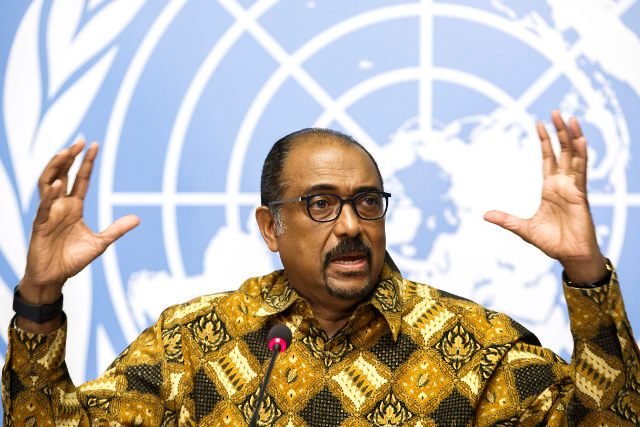SUMMARY
This is AI generated summarization, which may have errors. For context, always refer to the full article.

GENEVA, Switzerland – Efforts to end the global AIDS pandemic by 2030 are lagging, the United Nations warned Tuesday, July 12, decrying rising numbers of new HIV infections among adults in many regions, with Russia especially hard-hit.
In a new report, UNAIDS cautioned that while new HIV infections had fallen dramatically in the past two decades, especially among children, the trend among adults has stalled and even risen in a number of places over the past 5 years.
“This situation scares me, and we need to act fast,” UNAIDS chief Michel Sidibe told reporters in Geneva at the launch of the report.
“If we don’t, the epidemic could once again take hold with huge human and financial losses,” he warned.
The HIV epidemic has been in decline over the past decade, but there are still 36.7 million people worldwide living with HIV/AIDS, most of them in sub-Saharan Africa.
Great strides have especially been made globally towards preventing children from contracting HIV, with new infections among those under the age of 15 down 56% since 2010 and by 70% since 2000 to around 150,000 last year, the report showed.
Surging infections in Russia
But at the same time, some 1.9 million adults have contracted HIV globally every year for at least the past 5 years, according to Tuesday’s “Prevention Gap” report.
Most regions saw a flat trend, with relatively small increases or declines, but the Eastern European-Central Asian region had shown a dramatic 57% increase in new annual infections among adults since 2010, the report said.
A full 80% of those new infections occurred in Russia, with another 10% found in Ukraine, it said, blaming “low coverage of prevention programs, in particular harm-reduction interventions among people who inject drugs.”
Experts have complained that the Russian government’s policy focuses on treatment while neglecting prevention drives such as sex education in schools.
Russia also bans methadone replacement therapy for drug addicts, which would allow users to avoid injections, eliminating the risk of contracting the virus from contaminated syringes.
Pointing out that more than half of all new infections in Russia were among people who inject drugs, Sidibe warned that “If you don’t reach them you will not be able to control the epidemic.”
If the epidemic is not controlled among the main risk groups it will become more generalized, he warned.
Globally, people who inject drugs and men who have sex with men are 24 times more likely to be infected with HIV than the general population, while sex workers are 10 times more likely, the report said.
“If you don’t control the epidemic among those groups, because you have marginalized them, because you exclude them, because you criminalize them you will have infection moving into the general population,” Sidibe said.
Girls, women at risk
UNAIDS also voiced deep concern over the situation in eastern and sub-Saharan Africa, which continues to account for the vast majority of cases.
While the region has seen new infections among adults fall 4% since 2010, Tuesday’s report pointed to a stark gender inequality among those contracting the disease.
Three quarters of all new HIV infections among people aged 15-24 in the region occurred among adolescent girls and young women, the report found.
This was partly due to “extremely high levels of sexual abuse and violence against female children, including underage, child and forced marriage,” it said, also stressing that girls and women often lack access to HIV services due to gender inequality and stigma.
Such difficulties in the fight against the HIV/AIDS epidemic are being compounded by dwindling funding by international donors, and generally not enough spending on prevention efforts.
“We have a 5-year window of opportunity. If we miss this window of 5 years, we will have a rebound in this epidemic, we will have resistance, and will not be able to control the epidemic and make sure we end it by 2030,” Sidibe warned. – Rappler.com
Add a comment
How does this make you feel?
There are no comments yet. Add your comment to start the conversation.